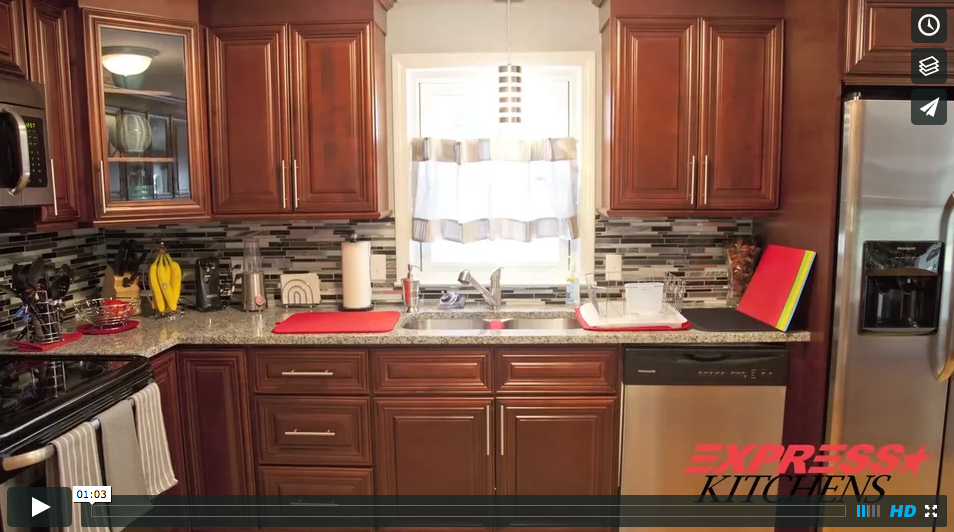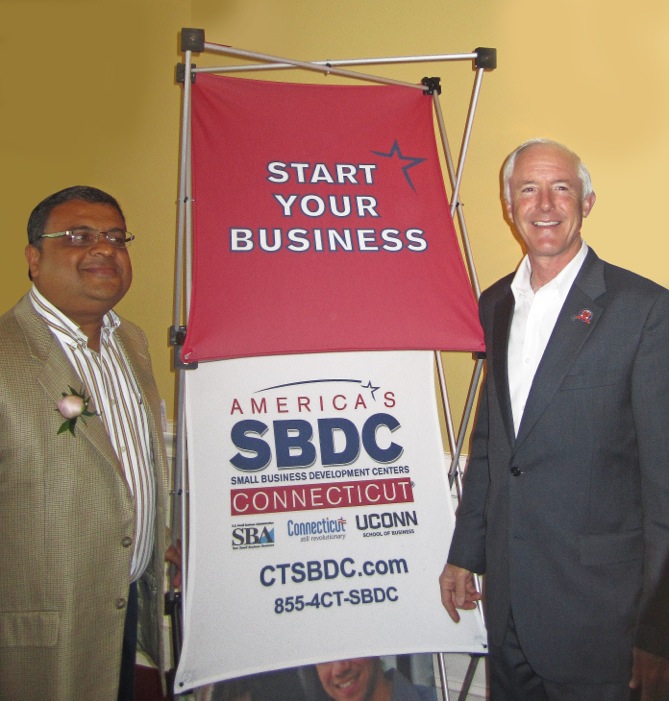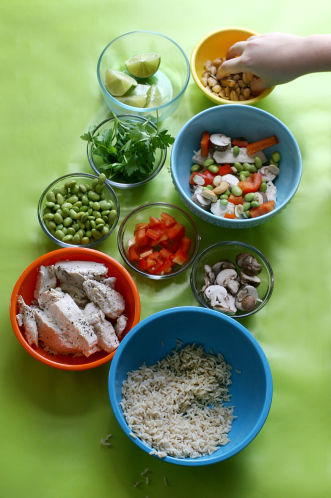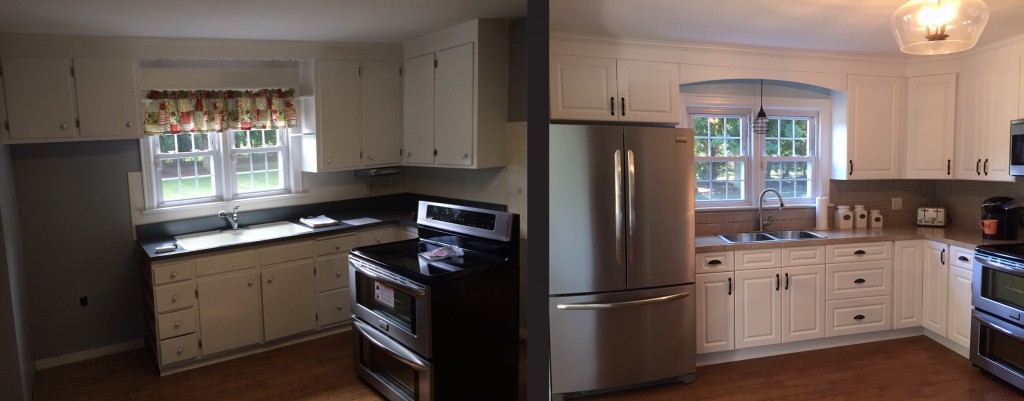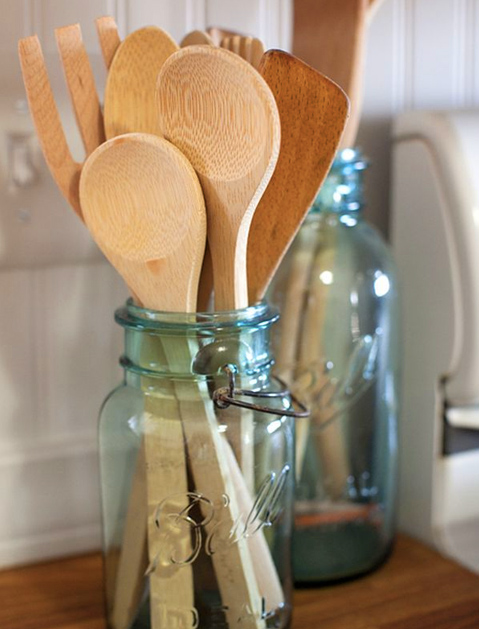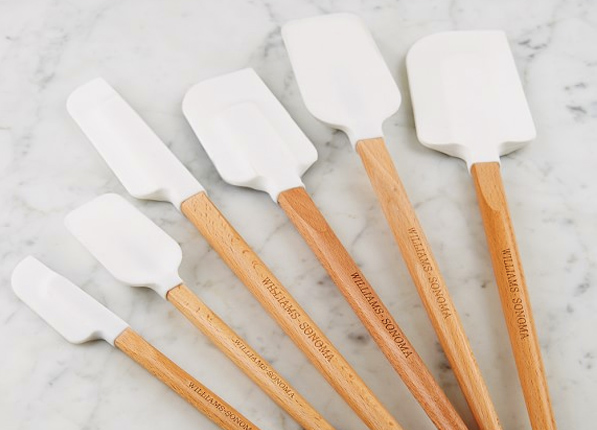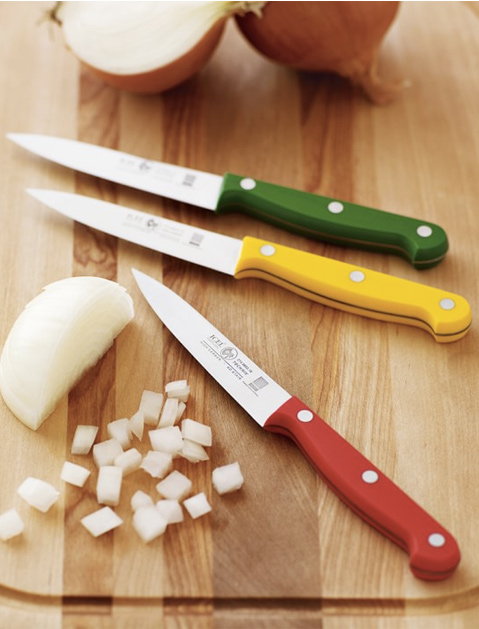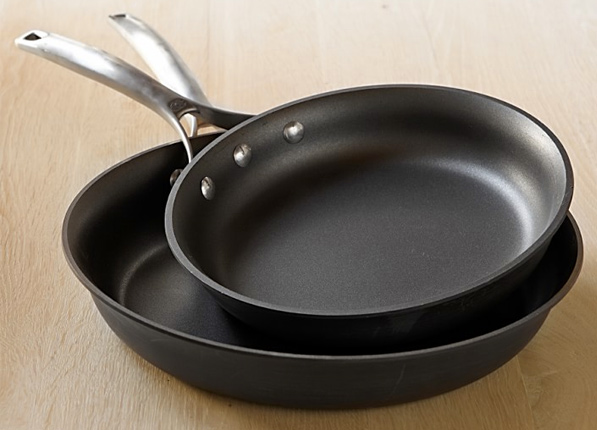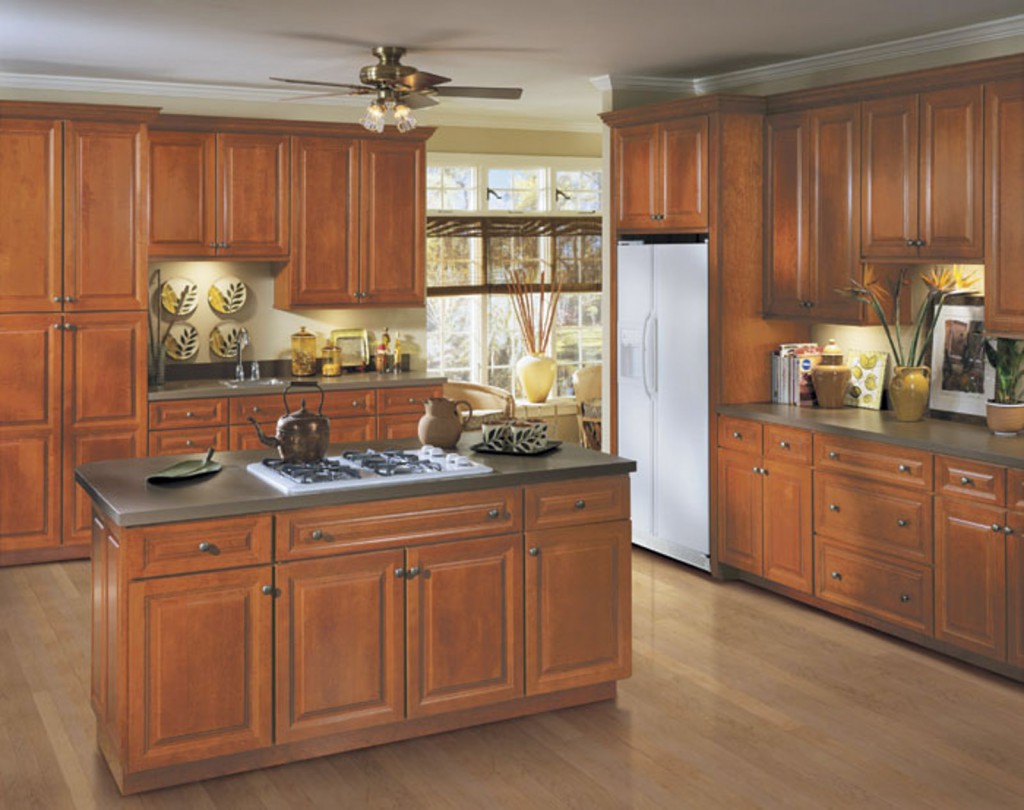Category Archives: Uncategorized
The Blatch Family from Springfield, MA Love Their New Kitchen!
Your Dream Kitchen Only $249 A Month!
Bridgeport Mayor Finch Welcomes Express Kitchens
For Dinner During The School Year, Have Family Members Assemble Their Own Plates
When it comes to weekday dinners during the school year, keep it simple, creative and fun. Don’t rely on meals that require a long cook time or have a ton of ingredients that need prepping that night. Cooking in bulk on the weekends and planning out meals for the week can be a lifesaver when everyone is busy. (For more tips like this, see Page 4E.) Consider Meatless (or Meatloaf, as it was in my house growing up) Mondays or Taco Tuesdays, theme nights that make planning a no-brainer and offer the family something consistent to expect each week.
In our talks with nutritionists and parents for this issue, one of the most recommended ways to get dinner on the table was the make-it-yourself bar. The thinking here is twofold: It’s less work for the person preparing dinner, and it offers something for everyone. You start with a base, then let each family member add what they want from a station of toppings. Consider making it a rule that everyone has to take one topping from each food group: a protein, three veggies, etc. But, you know, a fun rule. Here are three theme night ideas.
Monday Rice Bowls
What you need: 3-4 cups rice, a mix of brown and white
Small bowls of the following: chopped green onion, halved peanuts or almonds
Medium bowls of the following: diced onion, diced red pepper, sauteed mushrooms, peas, shredded carrots, meat (like cubed chicken breast or shredded pork)
Garnish: Sriracha, mint, basil, quartered limes
Taco Tuesdays
This is a popular option for a reason. It’s easy to get a full meal out of a loaded taco — and a healthy one, too. Fill the loading station with beans and lots of veggies, and consider putting out a big bowl of lettuce so people can make taco salads instead if they want.
What you need: Flour or corn tortillas, a mix of hard and soft
Small bowls of the following: shredded cheddar or Monterey Jack cheese, sour cream or Greek yogurt, avocado
Medium bowls of the following: diced tomatoes, diced onions, corn, black beans, refried pinto beans, meat (like ground turkey or shredded chicken breast)
Garnish: hot sauce, quartered limes, cilantro
Friday Night Pizza Party
What you need: Fresh pizza dough
Small bowls of the following: thinly sliced garlic, Parmesan cheese, pepperoni
Medium bowls of the following: marinara sauce, mozzarella cheese, thinly sliced tomatoes, diced onions, red or yellow pepper strips, chopped broccoli
Garnish: Italian seasoning, garlic powder, crushed red pepper
Five Ideas For Fast Breakfasts During The School Year
It’s essential to send kids to school with something in their stomachs, even if it’s just a piece of toast. Skipping breakfast can harm children’s developing brains and bodies, making it harder for them to focus in class. Karla Dumas, a dietitian with the Humane Society, says it’s important for kids to get their metabolisms going in the morning even if they’re not hungry. She often prepares smoothies for her 11-year-old stepdaughter as a way to get something in her system — she, like most young ones, isn’t hungry enough to eat a full breakfast first thing. Smoothies and other to-go foods are a good way to get at this problem. Here are five ideas for fast, easy weekday breakfasts. These meals are good for school-bound kids — and their busy parents, too.
Egg burrito
We like these for their freezer factor. Make five on Sunday and pop them in the freezer, then reheat each morning and wrap in aluminum foil for a filling to-go breakfast. To make five burritos: Crack 8 to 10 eggs into a bowl, add some salt and pepper to taste and whisk well. Cook eggs in a nonstick skillet until scrambled;; turn the burner off just before they’re done so they don’t overcook — remember, these will be reheated. Divide eggs among five flour tortillas. Season with more salt and pepper, then top with shredded cheddar cheese. Roll tortillas to form burritos and freeze in a large zip-top bag for up to 5 days. The morning of, take a burrito out, wrap it in a wet paper towel and cook it in the microwave for 1 minute.
Parfait
Yogurt parfaits are full of protein that will keep kids full throughout the morning. Consider buying a large tub of yogurt instead of single servings and make enough parfaits for the week. For the yogurt, stick with something relatively plain (like vanilla) and be on the lookout for sugar substitutes and other additives in nonfat or low-fat varieties. For kids, a little bit of fat is fine. Try using Greek yogurt for its rich texture and flavor. To make: Spoon 1⁄2 cup yogurt into a mug, mason jar or even a plastic cup. Top with 1⁄3 cup grapes, blueberries or raspberries (or a combination of all three) and a pinch of cinnamon. This can be done 3 or 4 days before the parfaits are eaten. The morning of, spoon 2 tablespoons of any kind of nut and 2 tablespoons of granola on top — these ingredients will get soggy if added before. (To make a quick granola at home, simply mix 2 cups oatmeal with 2 tablespoons each brown sugar, olive oil and maple syrup, then cook mixture on a sheet pan in a 250- degree oven for about an hour until slightly toasted and fragrant.)
Overnight oatmeal
This oatmeal absorbs liquid in the fridge overnight, so all you need to do in the morning is add toppings. To appeal to kids, we’re making those toppings reminiscent of peanut butter and jelly. To make: In a mason jar or other glass container with a lid, mix 1⁄2 cup rolled oats with 1⁄2 cup milk (regular, soy or almond). Stir in 1 tablespoon peanut butter and pop in the fridge;; let sit overnight. In the morning, give the whole thing a good stir, then top with 1 teaspoon jam or jelly and 1 teaspoon diced walnuts or almonds.
Smoothie
Smoothies are ideal for people who don’t feel like eating breakfast. To really speed things up, throw all of your smoothie ingredients in a bag in the freezer the night before. In the morning, simply dump the bag in a blender, add liquid and mix. To make: Here’s a recipe for a peach-strawberry-banana variety. To a blender, add 1 whole frozen banana, 1⁄3 cup fresh or frozen strawberries, 1⁄3 cup fresh or frozen peaches, 1⁄3 cup yogurt, and a couple of splashes of water or orange juice, then blend until smooth. (Optional: Add a scoop of vanilla protein powder.) You shouldn’t need ice if you’re using frozen fruit;; if you’re not, add 1 cup of ice before blending.
Toast
We’re topping this toast with all kinds of goodies to make sure it keeps your munchkins full for a few hours. To make: Toast two pieces of whole wheat or whole-grain bread. Slather each piece with 1 tablespoon peanut butter, then top with banana slices. (Use 1 whole banana per two slices.) Add a handful of raisins to each slice, then drizzle the whole thing with some honey. Serve with plenty of napkins.
Express Kitchens Featured on HGTV’s House Hunters
Express Kitchens customer Nicole Mele and her recent Express Kitchens remodel will be a focal point of an upcoming episode of House Hunters, on the HGTV television network.
In House Hunters, buyers look for a new home that is anything but turnkey. They tour three potential homes and ultimately choose the one that’s waiting for their special touch. The buyers renovate and decorate, ultimately revealing their new space.
On an upcoming episode, a kitchen overhaul features Express Kitchens’ Quebec cabinetry and Travertine countertops. “We love our kitchen so much,” said Mele, who praised Express Kitchens for its support, guidance, and expertise during the installation process. “It is exactly what I was hoping for,” she said.
Recently named one of the nation’s best small businesses by the SBA, Express Kitchens offers customers throughout Connecticut and Western Massachusetts an increasing number of cabinet options along with better buying power and bigger savings.
Express Kitchens recently opened its eighth location at 399 Boston Avenue in Bridgeport, CT.
6 Kitchen Tools You Didn’t Realize Had Expiration Dates
Know when it’s time to put that spatula out to pasture
All’s well and good in the kitchen…until your 15-year-old blender starts smelling like burning plastic. Make your cooking tools pull their weight by replacing them when they expire and looking for telltale signs of imminent demise. Here’s how often the most common culprits most likely need replacing.
WOODED SPOONS: EVERY 5 YEARS
Or when you find cracks, discoloration or soft spots. (Quit mixing your ma’s marinara sauce with a cracked, porous spoon filled with scary E. coli.)
RUBBER SPATULAS: EVERY 2 YEARS
Or when they’re deeply scratched, missing chunks, melted or embarrassingly stained. Because, honestly, is there anything sadder than an orange-tinted “white” spatula?
PAIRING KNIVES: EVERY 2 YEARS
Or when they break, rust or no longer take to sharpening. Pro tip: Expand their lifespan by sharpening once a week with a sharpening stone or whetstone.
NONSTICK COOKWARE: EVERY 2-3 YEARS
Or when you spot surface chips or scratches…or when scrambling eggs becomes a cleanup nightmare. Pro tip: You can keep these guys from scratching by storing them hanging up or stacked with a paper towel in between each one.
PLASTIC CHOPPING BOARDS: EVERY 3 YEARS
Or when they develop deep marks from knife cuts. Be sure to stock up on separate boards for meat/poultry and fruits/veggies–or else live in fear of salmonella in your salad.
COUNTERTOP BLENDERS: WHEN YOU DROP IT OR SUBMERGE THE BASE IN WATER
That is, according to manufacturers. Otherwise, just replace blades when they become dull (search for a manufacturer kit for your model). And keep on keepin’ on with those daiquiris you’re famous for.
3 Steps To Choosing The Right Kitchen Cabinets
Cabinets can be the biggest expense in a full kitchen remodel, accounting for up to 40 percent of the overall budget. They also set the visual tone for the kitchen, and they’re a huge part of how well it functions. Bottom line: Get the cabinets right and your chance of loving your new kitchen will go way up.
Step 1: Set the budget
Cabinets fall into three categories: stock, semi-custom, and custom. Stock cabinets start around $70 per linear foot (a typical kitchen has 25 to 30 linear feet of cabinets). Semi-custom cabinets, which range from $150 to $250 per linear foot, come in more configurations, so they’ll fit your kitchen more precisely, if not perfectly. Custom cabinets can easily cost $500 or more per linear foot; they’re crafted to your exact specs and can include many personalized features.
Step 2: Choose a style
The big decision is between framed and frameless. Framed cabinets consist of a box and face frame, to which doors and drawers are attached. Frameless cabinets, often referred to as European-style, eliminate the face frame; doors and drawers attach directly to the cabinet box. That provides great accessibility and a more contemporary look. On the downside, the absence of a face frame can compromise rigidity; better manufacturers compensate by using a thicker box—say, ¾-inch plywood instead of ½-inch particleboard. For the European look in a framed cabinet, opt for a full-overlay door, which covers all or most of the face frame.
Step 3: Pick the features
Accessories can improve cabinet functionality, but they’ll also increase the cost by 20 percent or more. A pull-out trash can is a worthwhile addition. Built-in charging stations are helpful, too, because they keep the countertop clear of electronic devices. Appliance garages, those countertop compartments designed to conceal small appliances, don’t always offer the best organization. Instead, consider a lift cabinet with a spring-loaded shelf that swings up and out, providing easy access to a mixer, food processor, or other hefty device.
Design tips from the pros
Lighting
“Integrated lighting has become very popular. As soon as you open the drawer, the light comes on. We also do a lot of undercabinet lighting, including LED fixtures with a built-in plug for countertop appliances and a USB port to charge your smartphone and other electronics.”—Kathleen Wilber, Ikea, U.S. sales leader for kitchens
Finish
“There’s still plenty of interest in lighter-toned cabinets. But we’re starting to see an uptick in our pebbled gray and chai finishes, as more customers go for a tinted neutral color instead of stark white.”—Tracy Riel, KraftMaid Cabinetry, manager, designer services
Features
“Easy-access, touch-to-open door and drawer releases are catching on. There’s also a preference for more paired-down door styles and greater interior functionality. That includes task-specific features like coffee-service components and pull-out storage that alleviates physical strain while eliminating dead space.”—Amy Benton, BauformatUSA, accounts and marketing manager

